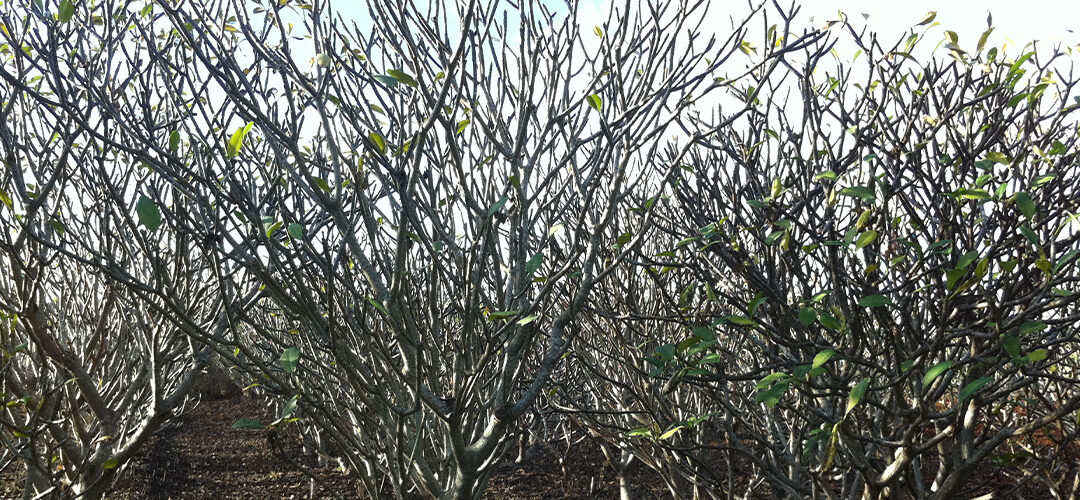

How to Strike a Frangipani Cutting at Home!
Growing your own frangipanis from cuttings can be heaps of fun and rewarding. So strike a cutting from your own established frangipani tree, purchase one from our collection online and grow it for your own garden, or even gift frangipani to your loved ones?
Frangipanis are a tree that one certainly doesn’t forget. There’s the hypnotising fragrance and the unique beauty of each variety of frangipani. And if you’re reading this blog, chances are, you are hooked on frangipanis, just like us at Fancy Frangipanis!
Hi there! I’m Andy from Fancy Frangipanis. Quite often, I have great conversations with people who love frangipanis or have family and or friends that grow and collect frangipanis. For example, I recently discussed frangipanis with a young couple. They told me the story of the lovely pinks, whites and multicoloured frangipanis that their grandmother grew in her garden, and all the enjoyment they had with the perfumed flowers and playing in the trees as children.
Her Grandmother had taken cuttings and grown plants for all the family members from her mature trees, and they had planted these in their own gardens.
Unfortunately, the young couple needed to move homes, and their Grandmother could no longer help. Yet they still wanted to grow some plants from the original trees to plant at their new home but had no idea how to strike frangipani.
So, I connected the couple to our website and provided them with the following steps we follow and share with our customers how to grow a new frangipani plant from a cutting.
And it’s not hard!
There are a few easy steps.
- Take a mature stem cutting about 30-40cm in length from the established tree.
- Remove the leaves in summer or take the cutting at the end of the dormant winter period while the stems are bare and sun-hardened.
- Store the cutting in a shaded or mottled sunlight position for one week to ten days to allow it to air dry.
- Prepare your pot with a well-drained potting mix.
- Dip the sliced end of the cutting in a rooting compound found at your local hardware store. However, this is not essential as frangipanis will strike new roots readily without a rooting hormone.
- Insert the cutting into the centre of the pot down to a depth of around 100mm or two thirds of the way down the pot, pressing the mix down to ensure the cutting stands up on its own. In a lighter potting mix and with a larger cutting, we often insert a bamboo or timber stake beside the cutting, which is then secured with garden twine or zip ties to keep the cutting upright and firm while it sets a robust root system.
- Water the potting mix and allow it to drain, then place the pot in a sheltered position where it receives mottled sunlight for 4-6 hours daily.
Watch this quick and informative video of Andy from Fancy Frangipanis about how to strike your cutting.
How long does it take for the frangipani to root and be secure in the pot?
Roots should form within a couple of months during spring and summer. Do not overwater or water too much or too often while rooting occurs, as waterlogging can lead to the frangipani cutting potentially rotting off at the base. Everything the plant needs to form leaves and roots is contained within the rich sap of the cutting itself. Once the cutting has developed a set of leaves, you can also assume the cutting has started taking root. At that time, you should move your frangipani to a spot that gets at least six hours of sun daily. Apply a slow-release fertiliser at the recommended rate for the product and your pot size.
I live in a cold climate. How do I care for my cutting after it is potted?
It’s okay to put your frangipani cuttings outside, providing temperatures are above 20 degrees celsius both day and night. Otherwise, we recommend putting them inside in a nice, bright, sunny position in cooler climates until you are ready to plant them. For example, one of our customers in Western Qld moves their plants into a warm sunroom during winter and then rolls them out again during the warmer months of the year. And in New Zealand and Tasmania, I have seen lovely frangipani specimens in glasshouses and warmer sheltered courtyard areas.
How do I transplant the potted frangipani into the earth?
Ideally, if you can leave the cutting in the pot until after winter, that is the best time to plant it into the ground. Why? Because the plant is dormant but close to getting ready to grow and bloom. This means the plant will have less chance of being negatively affected by the transplanting as frangipanis, like most pot plants, can have brittle young root systems. However, transplanting your potted plant into the garden should be done carefully.
Where is the best place to plant my frangipani once roots have formed in the pot?
Use the shape of the frangipani, noting its rounded umbrella shape, showy foliage, and flowers to guide the perfect planting spot in your garden. Frangipanis can grow into medium to large trees but are slow growing, and in cooler, more temperate climates take some time to grow into large trees. In warmer tropical conditions, be mindful that there is enough space to branch out. Plant your frangipani where you can admire it and fully appreciate the flowers and fragrance.
Plant on the western side of your house to help shade the house in summer and allow the sun to stream in during winter when the stems are bare. Frangipani loves growing by the beach in sandy soils and is known as a hardy tree that tolerates salty air along the coast but not salt spray.
Mature frangipanis can grow 6m high and 5m wide. In Hawaii, New Guinea and Singapore, I have seen mature frangipani groves with trees over six metres in height due to the rich red volcanic soils in these tropical climates. They grow slowly, only about 20cm per year. This, along with their small root ball, makes them ideal for planting around pools, in planter beds, containers, and beside walls. Frangipanis respond well to pruning and training, and the branches and roots can be kept pruned to shape trees around pools or gardens and to keep them for extended periods in feature pots and planters.
What are the benefits of taking the effort to grow your own plants from cuttings, and is it worth the effort?
Absolutely and resoundingly, yes! Not only is it fun, but you get to choose the plant type, flower shapes and colours that you want, and if you are like us, you can collect multiple flower types that you can plant in hedges, as feature trees, in pots and planters. These plants are just so versatile. They offer shade, and you can make leis, place them in a bowl of water and display them in your home. Frangipani comes in a stunning range of colours and varieties, and they flower from October to April, thriving in well-drained soil, plenty of sun and frost-free conditions.
Contact us at Fancy Frangipanis today!




Recent Posts
Frangipani flowers love summer. The Aussie Christmas Tree.
“Summer loving had me a blast. Summer loving happened so fast…Summer days drifting away, to, oh,...

Frangipani flowers love summer. The Aussie Christmas Tree.
“Summer loving had me a blast. Summer loving happened so fast…Summer days drifting away, to, oh,...
Make a frangipani lei. Relive memories. Frangipani bridal bouquet.
Exotic frangipani blooms and displays transcend to a sweet place.The frangipani bloom is heralded...

Make a frangipani lei. Relive memories. Frangipani bridal bouquet.
Exotic frangipani blooms and displays transcend to a sweet place.The frangipani bloom is heralded...
My frangipani has no leaves! Help!
My Frangipani is losing its leaves and flowers and is naked. Why?First of all, it’s ok! Your...

My frangipani has no leaves! Help!
My Frangipani is losing its leaves and flowers and is naked. Why?First of all, it’s ok! Your...




